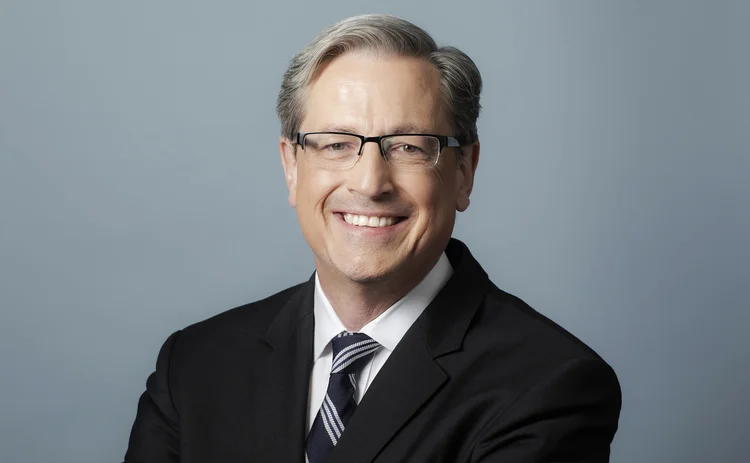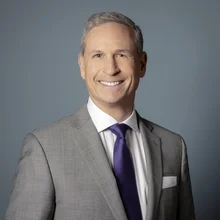
Exchange of the year: CME Group
Risk Awards 2023: Group puts US Libor transition back on track with tens of millions in fee waivers

On a sunny November afternoon in 2014, Sean Tully, an executive at CME Group, was in Washington, DC for a crucial meeting – one that could threaten the group’s stranglehold on US short-term rates trading.
Tully listened as Jerome Powell, then a member of the Federal Reserve Board of Governors, shared his concerns about Libor. Wild oscillations in the benchmark had wreaked havoc with the daily cost of credit, and investigations into rate rigging were in full swing. The US central bank was embarking on an ambitious plan to unhook global markets from the tainted rate, but it needed powerful allies.
CME had much to lose. Eurodollar futures and options, which reference three-month Libor, accounted for as much as half of the group’s interest rate futures volumes. Tully nevertheless gave his assurance that the group was onboard.
Seven years later, with the transition in exchange-traded derivatives making slow progress, CME took the radical step of waiving tens of millions of dollars of contract fees as part of a last-ditch push to increase liquidity in options linked to the secured overnight financing rate (SOFR).
The effort proved pivotal, powering an epic turnaround that put the exchange-traded transition on track for success ahead of US dollar Libor’s demise in June 2023.
We knew we had to get all participants to start trading SOFR options at one time in order to try and move the entire ecosystem over
Sean Tully, CME Group
In late 2021, just ahead of the Fed’s cut-off-date for new US Libor contracts, volumes of Eurodollar futures and options linked to the benchmark were still booming. However, Tully says the number of fledgling SOFR options being traded each day on CME was only in the “single digits”.
“I don’t mean single digit thousands,” he says. “I mean five contracts a day in the fourth quarter of 2021. I was very concerned about our SOFR options business and how small it was.”
One of the hurdles was regulatory. The Federal Reserve Board of Governors and the New York Fed, which were leading the charge on Libor reform, primarily oversee banks. Although regulators ushered dealers on to SOFR in over-the-counter markets, they had no sway over the high frequency market-makers that feed Chicago’s listed futures and options markets. With the regulators having so little clout, it was up to CME to force the changeover.
Tully says there was “reluctance” from some of these proprietary trading firms to switch over, with many only planning to do so in 2023.
“They had not updated their risk management systems, their algorithms, their market-making systems for the SOFR-based world,” he says. “So we proactively went to all of the large participants in Eurodollar options and we informed them that our personal view was they needed to move now.
“We knew we had to get all participants to start trading SOFR options at one time in order to try and move the entire ecosystem over.”
In June 2022, CME introduced three months of fee waivers for all SOFR options customers. Direct trading incentives were also paid to designated market-makers active in interest rate options. In all, the exchange ploughed tens of millions of dollars into the project.
The plan worked. Average daily volume (ADV) for SOFR futures and options soared exponentially. Open interest in SOFR options amounted to just 2,623 contracts at the start of 2022, but grew to 4.4 million by June and peaked at more than 25.4 million in Q4. The combined volume of open interest in SOFR futures and options reached 34.8 million on December 15, up from 1.9 million at the beginning of the year.
“We grew from a very small marketplace to an enormous marketplace,” says Tully. “SOFR futures and options are now the single largest short-term industry marketplace in the world.”

Derek Sammann, CME’s global head of commodities, options and international markets, puts the success down to an open dialogue with clients – and, specifically, to a strategic decision taken more than decade ago to adopt a sell-side-style account management structure.
“Back in 2010 we pivoted the way we engage with our customers and built a client segmented salesforce globally,” he says.
CME’s specialist teams cover each type of buy-side client, be they hedge funds, asset managers or pension funds. One team focuses on proprietary trading firms, another covers retail distribution partners and wholesale distribution products, while a third is tasked with keeping banks happy.
“Every one of those clients that make up our ecosystem have different needs,” says Sammann. “The ability to understand what a client needs, what their pain points are, is only as good as our understanding of what it is to walk in their shoes.”
In conversations with Risk.net, more than a dozen of CME’s clients – investment banks, hedge funds and commodity traders – lauded the group’s interactions with its customers.
“They are exceptionally good at client engagement,” says one commodity trader.
Heavy metal thunder
The Libor transition is not the only area in which this account management structure has paid dividends. It came into its own in March 2022, when an extraordinary spike in the price of nickel following Russia’s invasion of Ukraine led to the cancelation of trades that had been agreed on the London Metal Exchange.
Rumours circulated that CME might create a copycat nickel contract to capitalise on its rival’s misfortune. Yet the group’s first priority was to reassure customers about the strength of its operating model for metal contracts, which include aluminium, copper and gold, and its own market infrastructure.
“Our markets offer a range of additional customer protections, from circuit breakers that prevent the market from moving too far, too fast, to tools that mitigate client concentration risk,” says Sammann.
In the wake of the LME fiasco, CME expanded its share in non-ferrous futures and options markets following feedback from clients that needed a “safe place” in which to transact such business. Copper options ADV more than doubled in 2022, while the daily volume of aluminium futures jumped 73%.
Sammann attributes this growth to fundamental changes in CME’s stance on product development. He says this has moved from a “throw spaghetti on the wall and see what sticks” strategy in the early days – when new contracts failed more often than not – to a more client-guided approach that has improved the success rate for launches.
“We’ve gone from ‘this is what we need’ to ‘tell us what your problems and your concerns are’,” he says. “That’s been a cultural pivot for us over the last 10 years. Whether it’s environmental products, voluntary carbon, cobalt, lithium, the micro products that we built over the last five years… all of those things were built on client need.”
In equity options, crosstown rival Cboe has operated the VIX index of S&P 500 options volatility for decades. CME is now developing a similar approach for benchmarking implied volatility across rates, FX and commodities.
“We heard a lot about customers saying, ‘I wish there was an easier way to play volatility, or even just quantify volatility, in something other than the equities market’,” says Sammann. “Currently, you can trade volatility, but it requires you to trade the option, hedge it with the future and then dynamically manage your gamma, which can be complicated for your standard investor.”
CME Group’s CVOL suite of volatility indexes will create a simple measure of implied volatility for certain asset classes. Although they are currently little more than numbers published by the exchange, the longer-term vision is a world in which these implied volatility metrics become traded instruments, as is the case with VIX.
In a year of rising interest rates and wider market volatility, CME also helped clients reduce margin costs. Tully points to margining offsets between interest rate swaps, futures and options as a particular success story. In October alone, these delivered $9 billion of margin savings to the market.
From December 12, SOFR futures and options were added to those portfolio margining pools, alongside CME interest rate swaps, in what could lead to significant collateral savings for investors trading both on-exchange and over-the-counter rates products.
Crypto conundrum
The esoteric business of margin calculation technology lay at the heart of another story that defined 2022, and one in which CME was a vocal critic: the FTX saga.
FTX was seeking regulatory approval to offer leveraged crypto derivatives directly to retail traders. The exchange was seeking to bypass the longstanding futures commission merchant (FCM) model, instead exposing users to a novel type of real-time margining software that liquidates client positions the second a margin call is made.
CME’s chief executive Terry Duffy, an early critic of FTX’s risk management system, told the On the Tape podcast that he had called Sam Bankman-Fried “a fraud” during a brief chat with the FTX founder at an industry conference in March 2022.
Yet in October, CME was itself raising eyebrows. The group filed an application with the US Commodity Futures Trading Commission to allow it to act as an FCM – a conflict of interest, according to critics.
Duffy’s assessment of FTX’s risk management model, which he had dubbed “crap” on the podcast, proved correct when the crypto exchange spectacularly imploded in November, and the firm subsequently pulled its clearing application. CME continues to pursue its FCM application as a hedge against long-term developments in exchange and clearing models. Duffy has insisted that the group’s commitment to the FCM community is “unwavering”.
Only users who have a paid subscription or are part of a corporate subscription are able to print or copy content.
To access these options, along with all other subscription benefits, please contact info@risk.net or view our subscription options here: http://subscriptions.risk.net/subscribe
You are currently unable to print this content. Please contact info@risk.net to find out more.
You are currently unable to copy this content. Please contact info@risk.net to find out more.
Copyright Infopro Digital Limited. All rights reserved.
As outlined in our terms and conditions, https://www.infopro-digital.com/terms-and-conditions/subscriptions/ (point 2.4), printing is limited to a single copy.
If you would like to purchase additional rights please email info@risk.net
Copyright Infopro Digital Limited. All rights reserved.
You may share this content using our article tools. As outlined in our terms and conditions, https://www.infopro-digital.com/terms-and-conditions/subscriptions/ (clause 2.4), an Authorised User may only make one copy of the materials for their own personal use. You must also comply with the restrictions in clause 2.5.
If you would like to purchase additional rights please email info@risk.net
More on Awards
Trading systems: structured products/cross-asset – Murex
Murex won the Trading systems: structured products/cross-asset award at the 2025 Risk Markets Technology Awards for its MX.3 platform, praised for its flexibility and advanced analytics
Best vendor for system support and implementation: Murex
Murex has won the Best vendor for system support and implementation at the Risk Markets Technology Awards, recognised for its innovative MX.3 platform, exceptional client support and seamless implementation services
FRTB-IMA product of the year: Murex
Murex wins FRTB-IMA product of the year for its advanced, scalable MX.3 platform enabling seamless regulatory compliance
Pricing and analytics: equities – Finastra
Finastra’s Sophis platform wins the Risk Markets Technology Award for Pricing and analytics in equities, recognised for its robust capabilities in equities and derivatives trading
Best execution product of the year: Tradefeedr
Tradefeedr won Best execution product of the year for its API platform, which standardises and streamlines FX trading data, enabling better performance analysis and collaboration across financial institutions
Collateral management and optimisation product of the year: LSEG Post Trade
LSEG Post Trade wins Collateral management and optimisation product of the year for interconnected services that help mitigate counterparty risk and optimise capital usage
Clearing house of the year: LCH
Risk Awards 2025: LCH outshines rivals in its commitment to innovation and co-operation with clearing members
Driving innovation in risk management and technology
ActiveViam secured three major wins at the Risk Markets Technology Awards 2025 through its commitment to innovation in risk management and technology







